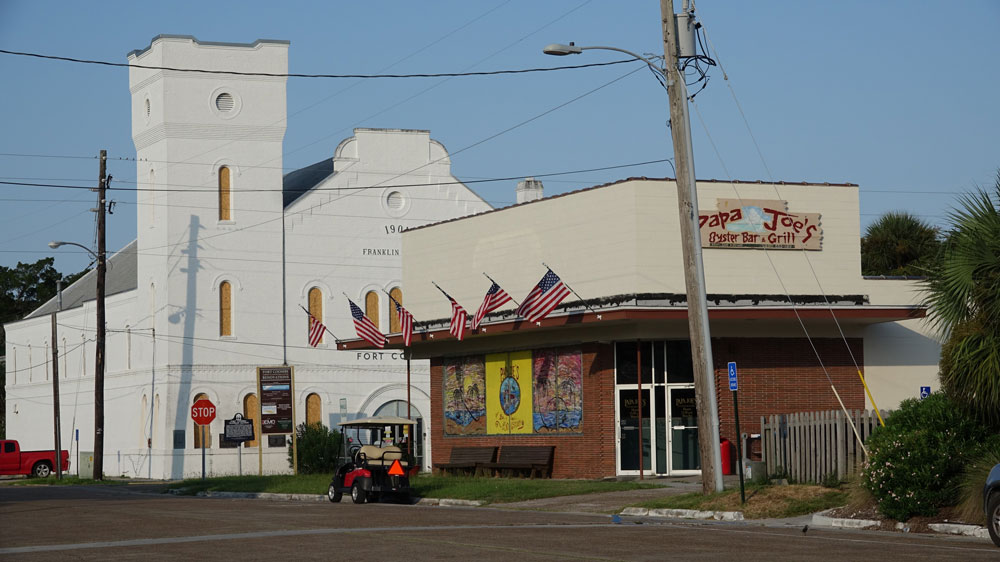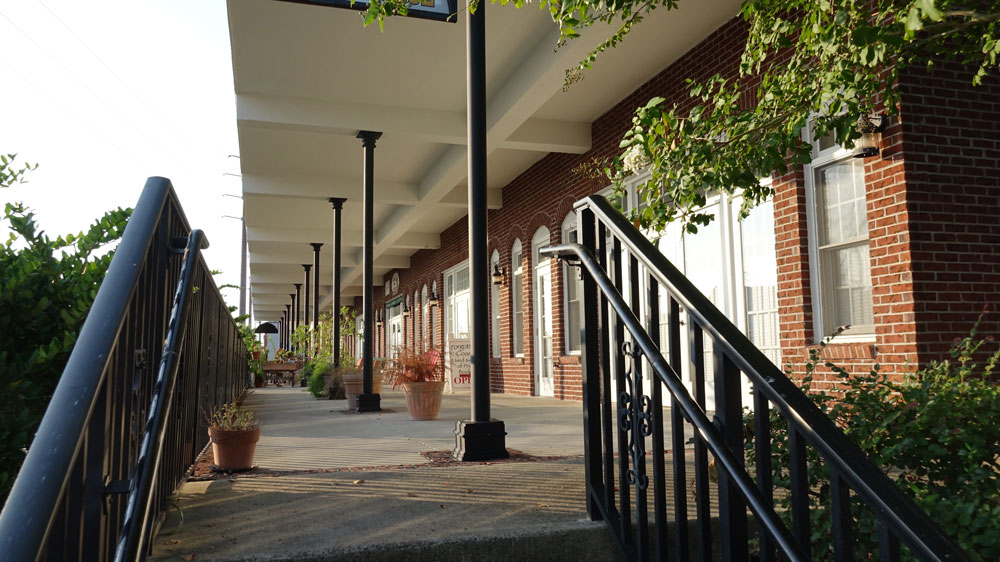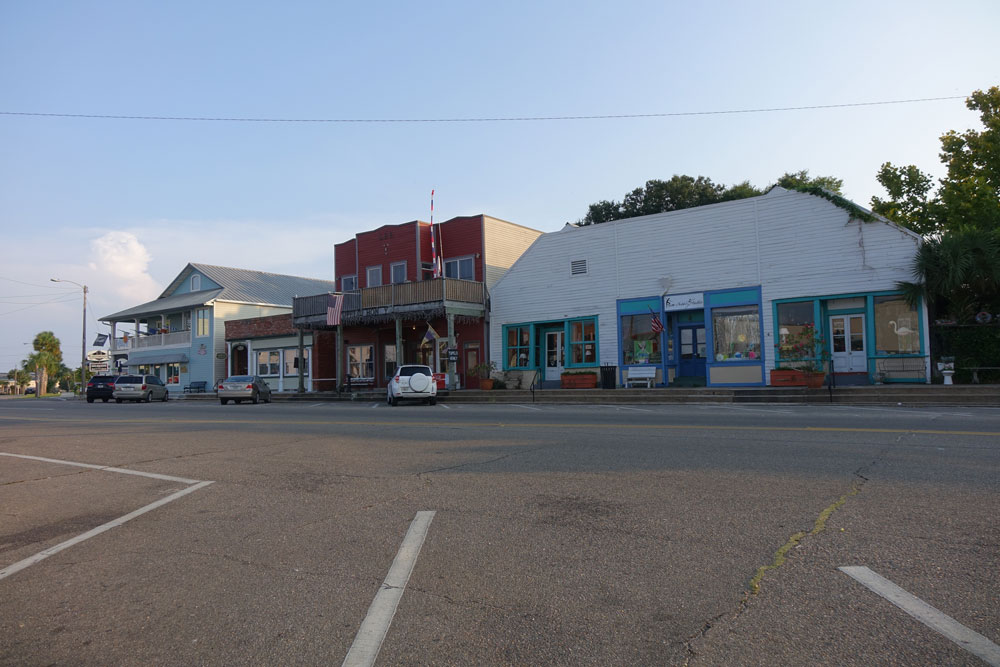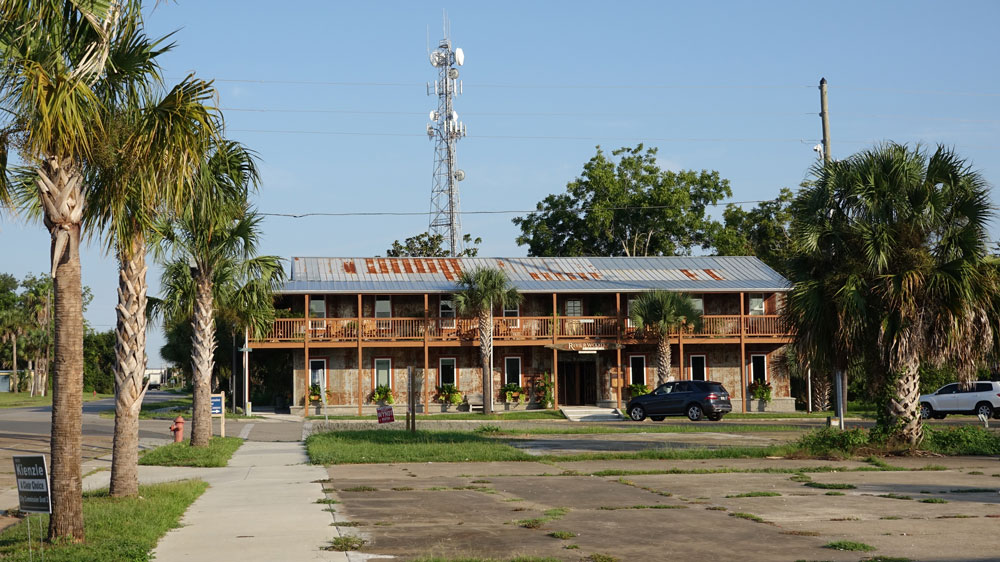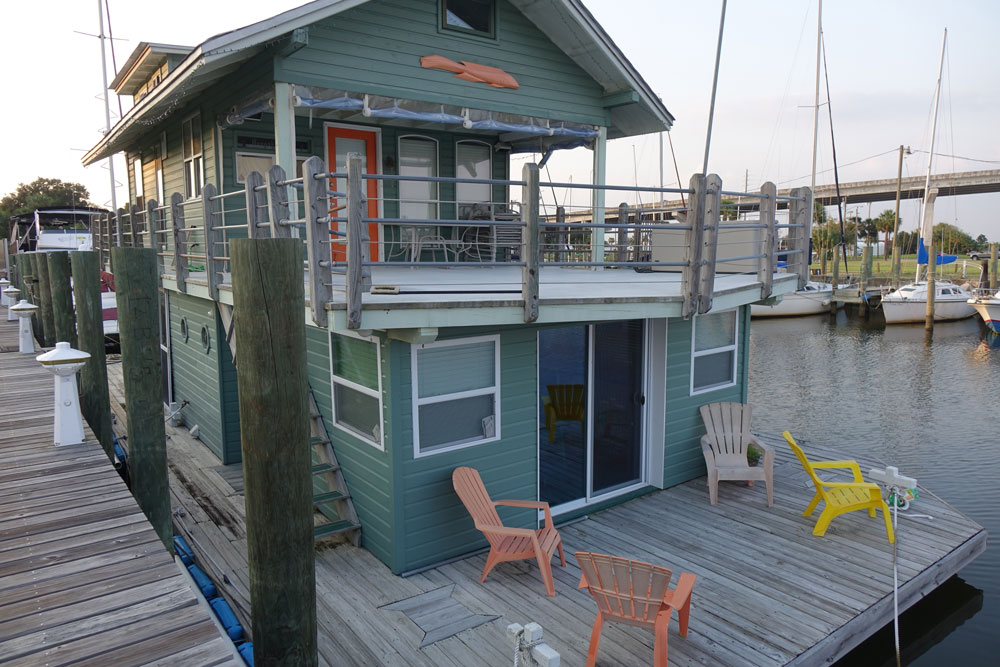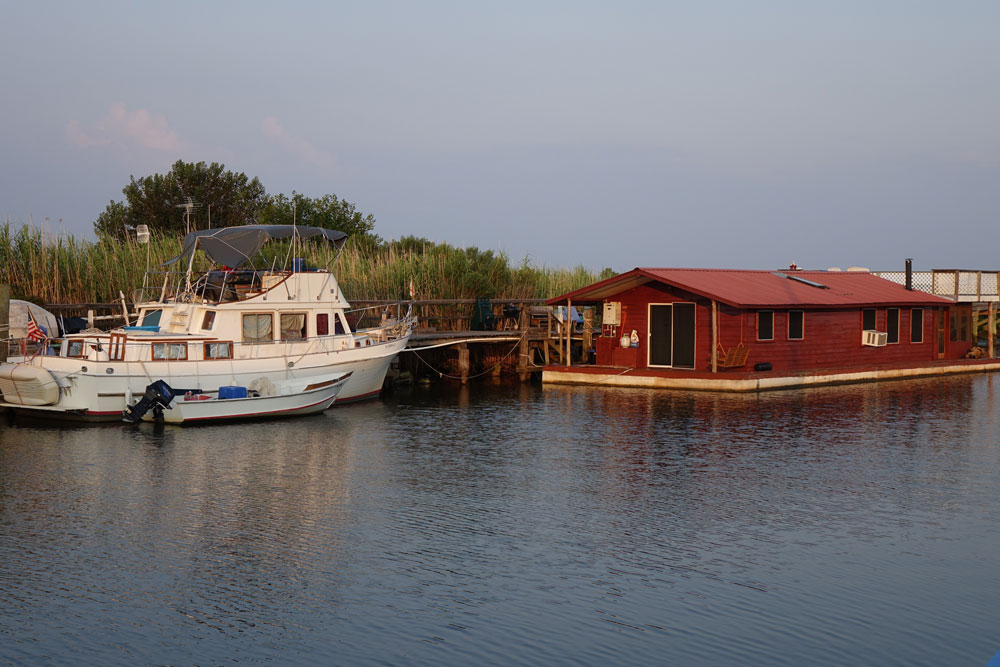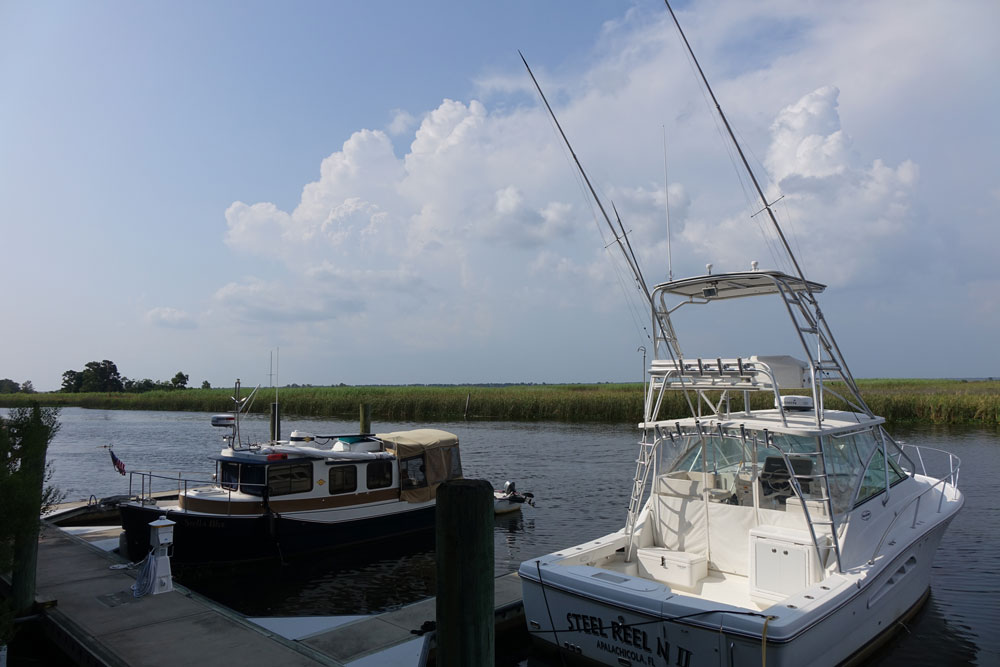Apalachicola – Authentic Fishing Town with Oyster Guarantee
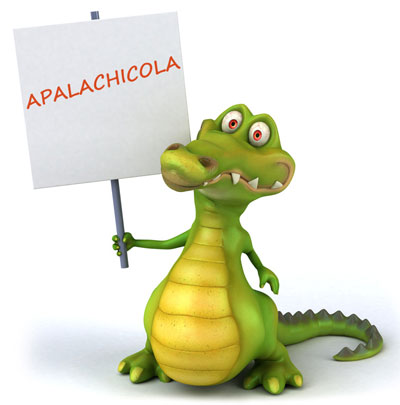
Welcome to Apalachicola, where time ticks slower and the water smells of fresh oysters! Florido loves this small town on the Forgotten Coast, where fishing boats rock in the harbor and the streets tell stories of times past. No crowds, no hustle – just real, authentic Florida and fresh Apalachicola oysters. Come with me to old Florida!
Apalachicola – the Essentials at a Glance
- Authentic Florida – Small fishing town with relaxed Southern charm on the Forgotten Coast
- The best time to visit is from October to May for pleasant weather and less humidity.
- Famous for – Apalachicola oysters, historic old town, and maritime culture
- Attractions – John Gorrie Museum, Orman House, Apalachicola National Estuarine Research Reserve
- Nature & Adventure – Boat tours through the marshlands, kayaking & pristine beaches on St. George Island
Climate and Weather
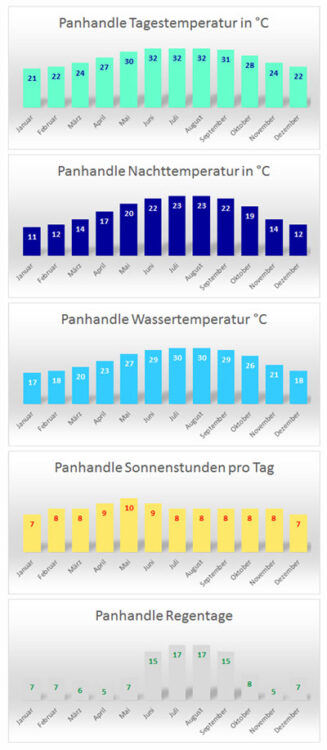
Information Route Planner
| Size | 2.7 sq mi |
| Population | 2,500 (Estimate 2022) |
| County | Franklin County |
| Coordinates | 29° 44 “N 85° 0” W |
| Area code | +1 805 |
| Tourist Info | Apalachicola Bay Visitor Center |
The Perfect Day in Apalachicola
Early risers take a short walk through the town shortly after sunrise. Then they can watch the fishermen set out. There’s a small boardwalk with benches on Water Street where you can see numerous boats pass by. With a coffee from next door – simply perfect!
In the morning, we then explore the beautiful St George Island. First, coming from the mainland, we drive to the right along the road until a private entrance leaves us wondering if it gets even more beautiful beyond. The famous stilt houses of the Panhandle are ubiquitous here, and the public beaches are completely devoid of the public.
The other side of the island leads to St George Island State Park, where the initially flat dune landscape becomes increasingly hilly. After an extensive, often solitary beach stay, we drive back to Apalachicola in time to stroll through numerous art shops during a small shopping trip along Main Street.
In the evening, our chosen oyster restaurant is a must. There are several at quite affordable prices. Afterwards, we go to the sunset on the boardwalk next to the bridge at the end of Main Street. With a bit of luck, we watch the local anglers in their after-work activity and wonder once again at the end of the day why the “Forgotten Coast” is so forgotten. We also come to the conclusion that everything here is completely different from the south: Deserted beaches, hardly any tourism, and wonderful authenticity leave one breathless.
Activities Highlights around Apalachicola
Nature Parks Beaches
No post found!
Attractions
No post found!
Events
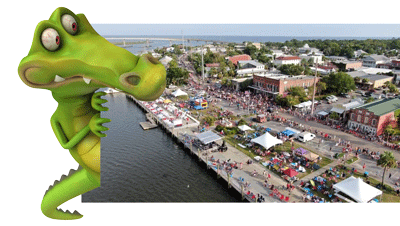
Authentic Florida at its Finest
A visit to Apalachicola, Florida, will be unforgettable. The town offers a charming mix of history, nature, and culinary experiences, as well as backdrops for incredibly beautiful pictures.
Apalachicola is known for its well-preserved 19th-century architecture. The Raney House Museum, a Greek Revival house from 1838, offers insights into the region’s history. For an authentic stay away from hotels and vacation rentals that all look the same, the highly-rated Water Street Hotel Marina or the historic Gibson Inn, which combines modern comfort with traditional charm, are recommended – two accommodations you’ll never forget.
Nearby, the St. George Island State Park invites visitors to relax, swim, and collect seashells along 22 miles of pristine white sandy beaches in an incredibly beautiful dune landscape. Additionally, the surrounding waters offer opportunities for kayaking and fishing.
Apalachicola is famous for its fresh seafood, especially oysters. Local restaurants like Up the Creek Raw Bar serve these delicacies in a relaxed atmosphere with views of the river.
Wonderful Morning in Apalachicola
History of Apalachicola
In Apalachicola, history is virtually present, as it is still lived today. There are more than 900 historic houses, buildings, and places in the historic district. Originally, a trading post called Cottonton was established at this location. At that time, Apalachicola had the third-largest port in the Gulf of Mexico after New Orleans and Mobile. This brought wealth, and a diverse population grew, forming the foundation of this city.
The original plans for Apalachicola were modeled after Philadelphia, and the similarity is said to be still visible today. The city was founded in 1831 and received its current name in honor of the “Apalachicola Tribe”. In the early 20th century, the sponge trade was an important industry. Over the years, the city has evolved from a port town to a logging town, then into a seafood center focusing on oyster harvesting, and currently increasingly into a tourist region.
In 1849, physician Dr. John Gorrie (1802-1855) discovered the cold air process of refrigeration and developed an ice machine to cool the high temperatures of yellow fever patients. In 1850, he patented it, thus laying the foundation for the development of modern refrigeration and air conditioning. This made Florida and the South habitable year-round.
Remnants of the colorful and diverse past are still visible today through many historic houses and buildings. The historic district received the Main Street designation in 2011. A total of $1,433,340 was invested in 78 construction and renovation projects.







